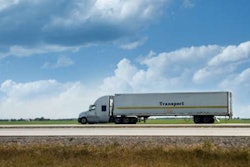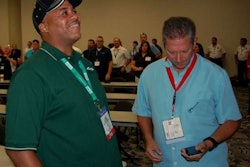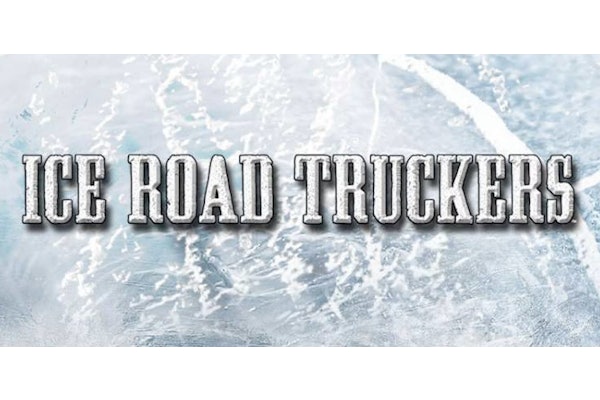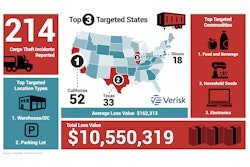At 8 a.m. on Wed., May 4, Jeff England walks through an aisle in Pride Transport’s maintenance bay on his way to the second floor of an adjacent office building.
England founded Pride in 1979 and his son, Jay, is now the chief executive officer of the Salt Lake City-based carrier with 500 trucks.
A few minutes later, a group of 10 drivers (seven men and three women) gather in the same isle with
Rick Drigmore, shop manager of Pride Transport, explains the fleet’s maintenance procedures to new drivers.The drivers are on the third day of Pride’s orientation training program. They arrived on Monday to take drug tests and on Tuesday spent most of the day in safety training, both in the classroom and on the road.
Drigmore tells drivers his main concern, and that of the maintenance department, is “keeping you going.” He describes the process for getting equipment repaired and washed while on site and on the road.
“When in doubt, just ask,” he says in a sociable manner. The people in the shop have a lot of tenure and experience with Pride. “This is the type of company where people hang around. As a trucking company, you are not going to find better than this,” he adds.
The drivers appear most interested when Drigmore talks about the leadership of the company. Jeff England, he says, “wants to be remembered as a truck driver” and occasionally takes his trucks to dealerships and loads to shippers to ensure Pride drivers are treated with respect.
“That’s how it should be,” comments a driver.
Pride Transport’s hand-wash truck bay serves as a trucking image campaign and driver recruiting tool.From the second floor of the building, the Englands have corner offices that face west, directly above the inbound and outbound truck lanes. They see trucks and trailers leaving the yard, and will make a quick phone call, if necessary, to stop a driver from exiting with unclean equipment, Drigmore says.
Pride Transport has a truck wash at its facility that operates 24/7. Keeping its equipment clean “makes a statement about who we are” and helps lift the image of the trucking industry, Drigmore says.
During the day, the new recruits also meet with Gene Cardall, the director of maintenance. He demonstrates how to perform a “regen” for diesel particulate filter (DPF) systems and talks about the type of equipment Pride operates, and the reasons why. The oldest trucks in the fleet are 2013 models; all tractors and trailers run Michelin tires and the fleet uses the Virtual Technician remote diagnostics service from Freightliner, he says, among other details.
It’s a lot of information to take in, especially if drivers have never operated a late-model truck.
Cardall also shows a presentation of various driver amenities. The most popular is the DIRECTV service from EpicVue, and several drivers say they want DIRECTV installed in their trucks before the orientation period ends on Wednesday. Drivers learn that Pride will be upgrading to memory foam mattresses and that its trucks are equipped with Sirius XM radio, among other creature comforts.
Alex Talo, a new driver from Las Vegas, recently left a larger carrier to work for Pride. The orientation training program is much more in-depth and informative than what he experienced at his previous company, he tells CCJ.
Gene Cardall, director of maintenance, talks to drivers about the amenities in their trucks.What brought him to Pride was more predictable home time and to work for a company that knows him by name, he says.
Heather Glidewell, a new driver from North Ogden, Utah, says the orientation program “makes you understand the business” by meeting with people from every department. She describes the orientation experience as “hands on.”
While seated in a large conference room, drivers get an in-depth presentation of Pride’s health, dental, vision, life and supplemental insurance benefits. Pride Transport also has a 401k and matches 10 percent of drivers’ weekly contributions.
Right before lunch, Steve Schelin discusses Pride’s pay program. Drivers earn raises by keeping up performance in three categories: miles, MPG and on-time performance. Every month, drivers earn up to 1,000 “career points,” he says. Once they accumulate 10,000 points they get an automatic pay raise, and additional raises for every additional 10,000 points.
A picture wall organizes current drivers by tenure.The points — and the raises — can never be taken away, he says.
Schelin tells drivers a scorecard will be delivered to them every month through the company’s in-cab computers from DriverTech and PeopleNet. Drivers that average at least 900 points over a three month period quality for a discounted DIRECTV subscription of 100 percent, followed by 75 and 50 percent.
The drivers came to Pride with a sign-on bonus of $2,000 that pays $500 after the first week on the job, $1,000 after 90 days and $500 after one year. Drivers also earn $120 per day for attending orientation.
Schelin says the most important part of Pride’s orientation program is getting drivers acquainted with the culture of the company and introducing them to the people and resources they need to be successful. He doesn’t expect drivers to remember everything, as “there is way too much (information) to absorb,” he says.
Before drivers leave orientation, he recommends they subscribe to the company’s YouTube channel, called the Pride Way, to review any topics that were discussed and to keep up with news and announcements, he says.
Driver onboarding has become a major area of focus for fleets, with research showing that nearly one-third of new drivers will quit in 90 days and half within the first six months on the job. Getting drivers accustomed to a new workplace, systems and culture can take time, but as the orientation experience at Pride Transport shows, there are many opportunities to make a first impression.










